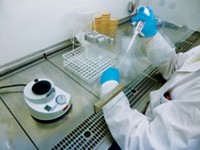Advertisement
Grab your lab coat. Let's get started
Welcome!
Welcome!
Create an account below to get 6 C&EN articles per month, receive newsletters and more - all free.
It seems this is your first time logging in online. Please enter the following information to continue.
As an ACS member you automatically get access to this site. All we need is few more details to create your reading experience.
Not you? Sign in with a different account.
Not you? Sign in with a different account.
ERROR 1
ERROR 1
ERROR 2
ERROR 2
ERROR 2
ERROR 2
ERROR 2
Password and Confirm password must match.
If you have an ACS member number, please enter it here so we can link this account to your membership. (optional)
ERROR 2
ACS values your privacy. By submitting your information, you are gaining access to C&EN and subscribing to our weekly newsletter. We use the information you provide to make your reading experience better, and we will never sell your data to third party members.
Business
New life for old preservative
Maker of benzoates sees opportunity to replace suspect biocides in personal care
by Marc S. Reisch
February 8, 2017
| A version of this story appeared in
Volume 95, Issue 7

As retailers and product formulators band together to find new cosmetic preservatives, Emerald Kalama Chemical is investing in 50-year-old sodium benzoate, calling it a safe, readily available alternative for a number of biocides under fire.
Today, many consumers shun preservatives such as parabens, methylisothiazolinone, and imidazolidinyl urea because of toxicity and skin sensitization concerns.
In November, the Green Chemistry & Commerce Council said it would launch a competition for new cosmetic preservative concepts backed by retailers and others with prizes up to $25,000. Driving the effort, GCC said, was a need to accelerate commercialization of safe and effective preservative systems in a market where so many of the old standbys are under attack.
But Emerald CEO Ed Gotch says the products his firm offers are already approved by regulatory authorities and accepted in food preservation. Sodium benzoate and its precursor, benzoic acid, have been around more than 50 years and are already widely used in foods, beverages, and pharmaceuticals to guard against mold, mildew, and fungus, he says.
The company is confident enough in sodium benzoate’s potential in cosmetics and other uses that it plans to add 30,000 metric tons of annual production capacity at its Rotterdam plant by 2019.
Produced via toluene oxidation, benzoic acid is a “highly purified synthetic equivalent” to benzoic acid found in cranberries, Gotch says. Certification agency Ecocert accepts Emerald’s benzoates in products that are labeled organic, he notes.
But although naturally derived benzoates would cost hundreds of dollars per kilogram, benzoic acid costs $1.00–$2.00 per kg, and sodium benzoate costs about a dollar more, Gotch says.






Join the conversation
Contact the reporter
Submit a Letter to the Editor for publication
Engage with us on Twitter